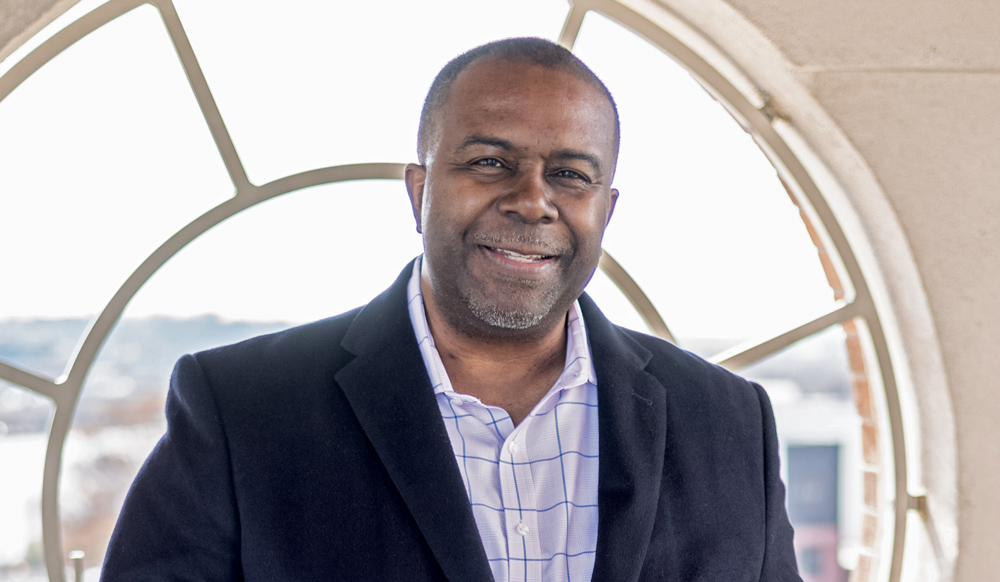health & humanity
Extending the social safety net to vulnerable communities

After majoring in political science at Swarthmore, Harrison pursued a master’s and then a Ph.D. at Northwestern. “Swarthmore opened me up to possibilities, and I became increasingly interested in how policy gets made,” he says. Harrison’s work helping to extend the social safety net to vulnerable communities evolved naturally into a career in public health. “Often,” he says, “those without resources and information are most at risk for contracting infectious diseases.”
His concern for those at risk for or living with HIV/AIDS stems in part from the loss of his brother, who died from AIDS-related complications in 1996. He stresses the importance of understanding the syndemic of diseases, in which the same populations are disproportionately impacted by an interplay of diseases.
“A recent surge in congenital syphilis is tied to COVID-19, homelessness, substance use, and poverty,” he says. “As long as structural inequities persist, vulnerable communities are going to be particularly at risk.” Natural disasters and climate change also exacerbate the public health threats for these same communities.
“We have to do better on the preventative side,” Harrison says, including investing in primary health care, health literacy, regular screenings, and vaccines. “We learned lessons from COVID-19. The average person knows more about vaccines than they did three years ago, including what questions to ask.” Forty years into the HIV epidemic, people who were on death’s door in the 1990s are alive today because of the remarkable advances in antiretroviral therapies (ART). “The current challenge is to increase the number of persons living with HIV who are virally suppressed and increase the use of preexposure prophylaxis for those at risk,” Harrison says. As principal deputy director of the Office of Infectious Disease and HIV/AIDS Policy at the U.S. Department of Health and Human Services, Harrison says younger members of his staff have grown up in a world where ART has largely taken away HIV’s death sentence. “While the level of fear isn’t the same, there’s still incredible stigma and misinformation about HIV,” he says. Over half of those living with HIV in the U.S. are over 50. Aging with HIV is a new focus for research and care as these people begin to experience the long-term effects of HIV and the use of these potent ART drugs. “The implications for both physical and mental health are enormous,” Harrison says.
Public health is always a local concern, and everyone has a role to play. Harrison urges fellow alums to sift through the noise of politics to understand what’s really going on and to encourage their children and grandchildren to consider careers in public health. “And,” he says, “get a flu shot — and then encourage someone else to get one.”